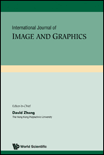
International Journal of Image and Graphics
Scope & Guideline
Connecting Scholars to the Future of Imaging
Introduction
Aims and Scopes
- Image Processing Techniques:
The journal publishes research on various image processing methods, including denoising, enhancement, segmentation, and restoration techniques tailored for different applications. - Machine Learning and Deep Learning Applications:
A significant portion of the research involves the implementation of machine learning and deep learning algorithms for tasks such as image classification, object detection, and feature extraction. - Medical Imaging:
The journal highlights advancements in medical imaging technologies, focusing on the development of algorithms for disease detection, segmentation, and analysis of medical images. - Computer Vision:
Research on computer vision encompasses various applications, including motion detection, gesture recognition, and video analysis, demonstrating the integration of image processing with real-world applications. - Multimodal Data Integration:
The journal explores the fusion of data from multiple sources, including images, text, and sensor data, to enhance the accuracy and effectiveness of various applications. - Innovative Algorithms and Optimization Techniques:
The journal emphasizes the development and application of novel algorithms and optimization strategies to improve the performance of image processing tasks.
Trending and Emerging
- Deep Learning Innovations:
There is a significant increase in research utilizing deep learning techniques for image processing tasks, including convolutional neural networks (CNNs) for classification, segmentation, and enhancement. - AI in Medical Imaging:
The application of artificial intelligence in medical imaging is trending, with an emphasis on algorithms for disease detection, prognosis, and patient management based on imaging data. - Agricultural Technology and Precision Farming:
Emerging research focuses on the utilization of image processing and computer vision technologies in agriculture, particularly for plant disease detection and precision farming solutions. - Multimodal and Cross-Domain Applications:
Research integrating various data modalities (e.g., combining visual and textual data) is on the rise, showcasing the journal's commitment to interdisciplinary approaches. - Real-Time Image Processing Solutions:
There is an increasing trend towards developing real-time image processing algorithms, particularly for applications in surveillance, autonomous vehicles, and interactive systems.
Declining or Waning
- Traditional Image Processing Techniques:
There has been a noticeable decrease in publications focusing solely on classical image processing methods, such as simple filtering and basic enhancement techniques, as researchers increasingly adopt advanced machine learning approaches. - Basic Feature Extraction Methods:
Research centered around conventional feature extraction methods is declining, as more complex and sophisticated techniques, particularly those leveraging deep learning, gain prominence. - Static Image Analysis:
The focus on static image analysis is diminishing in favor of dynamic applications, such as video analysis and real-time processing, reflecting a shift towards more interactive and application-driven research.
Similar Journals
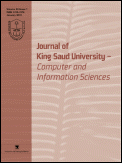
Journal of King Saud University-Computer and Information Sciences
Connecting Ideas, Shaping the Future of TechnologyJournal of King Saud University-Computer and Information Sciences, published by ELSEVIER, is a prestigious open-access journal focusing on the rapidly evolving fields of computer science and information technology. Since its inception in 1996, this journal has provided a platform for high-quality research and innovative ideas, promoting the dissemination of knowledge to a global audience. With a remarkable impact factor and ranked Q1 in the Computer Science (miscellaneous) category as of 2023, it stands among the top 11% of journals in its field, reflecting its commitment to excellence and relevance. The journal proudly carries the ISSN 1319-1578 and E-ISSN 2213-1248, and it is based in Saudi Arabia while being part of a global academic network. With a Scopus rank of #26 out of 232 in general computer science, the Journal of King Saud University-Computer and Information Sciences is an essential resource for researchers, professionals, and students seeking to stay at the forefront of technological advancement. As it continues to thrive through 2024, it invites contributions that will shape the future of computing and information sciences.

VISUAL COMPUTER
Elevating the Standards of Visual Computing ResearchVISUAL COMPUTER is a prestigious journal published by Springer, focusing on the dynamic fields of computer graphics, computer-aided design, computer vision, and software. Established in 1985, this interdisciplinary journal serves as a vital platform for sharing innovative research, applications, and developments crucial to the advancement of visual computing technologies. With a notable Q2 ranking in various categories, including Computer Graphics and Computer-Aided Design, and Computer Vision and Pattern Recognition, VISUAL COMPUTER demonstrates a solid impact within the academic community, marked by its Scopus rankings that reflect its significant contributions to the field. While the journal does not offer open access, it remains a reliable source of high-quality content for researchers, professionals, and students eager to stay abreast of emerging trends and techniques, ultimately fostering collaboration and knowledge exchange within the rapidly evolving landscape of visual computing.
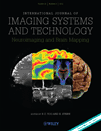
INTERNATIONAL JOURNAL OF IMAGING SYSTEMS AND TECHNOLOGY
Unveiling the Future of Imaging TechnologiesINTERNATIONAL JOURNAL OF IMAGING SYSTEMS AND TECHNOLOGY, published by Wiley, is a leading journal dedicated to advancing the field of imaging systems and technologies. With an ISSN of 0899-9457 and E-ISSN 1098-1098, this esteemed journal offers a platform for high-quality research spanning essential interdisciplinary areas, including Biomedical Engineering, Computer Science, and Health Informatics. Recognized for its impactful contributions, it holds a commendable position in the Q2 quartile across multiple categories as of 2023. The journal boasts an excellent Scopus ranking, with notable acknowledgments like rank #49 out of 333 in Radiology, Nuclear Medicine, and Imaging, showcasing its relevance and importance in the academic community. Publishes annually from 1989 to 2024, it aims to bridge gaps in knowledge and foster innovative developments through rigorous peer-reviewed articles. Though it operates under a traditional access model, the journal maintains an accessible repository of cutting-edge research, making it indispensable for researchers, professionals, and students alike seeking to stay at the forefront of imaging technology advancements.
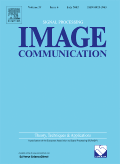
SIGNAL PROCESSING-IMAGE COMMUNICATION
Unveiling the Future of Visual TechnologySIGNAL PROCESSING-IMAGE COMMUNICATION, published by Elsevier, is a leading journal in the fields of Computer Vision, Signal Processing, and Electrical Engineering. With an impressive range of Quartile rankings in 2023, including Q1 in Electrical and Electronic Engineering and Q2 in Signal Processing, this journal is vital for researchers and professionals seeking the latest advancements and comprehensive studies in image communication technologies. Issued in the Netherlands, SIGNAL PROCESSING-IMAGE COMMUNICATION has been an essential resource since its inception in 1989, fostering innovation and collaboration among academia and industry. The journal provides a platform for high-quality peer-reviewed research, addressing significant challenges and solutions in the convergence of image processing and communication. Although currently not an Open Access journal, it offers subscription options that ensure a broad dissemination of groundbreaking knowledge. With a robust reputation reflected in its Scopus ranks, this journal serves as an indispensable reference for students and experts aiming to stay at the forefront of developments in this dynamic field.

MULTIMEDIA TOOLS AND APPLICATIONS
Fostering collaboration in the evolving landscape of media technology.MULTIMEDIA TOOLS AND APPLICATIONS, published by Springer, is a highly regarded journal in the fields of Computer Networks and Communications, Hardware and Architecture, Media Technology, and Software. Since its inception in 1995, this journal has established itself as a vital platform for disseminating innovative research and developments, maintaining a prominent position evidenced by its Q2 and Q1 rankings across various categories as of 2023. With an ISSN of 1380-7501 and an E-ISSN of 1573-7721, it continues to attract high-quality contributions from scholars and practitioners worldwide. Although it does not currently offer Open Access options, its impact is reflected in impressive Scopus rankings, placing it in the top quartiles in multiple categories, including a remarkable 10th rank in Media Technology. As the field evolves rapidly, the journal’s objectives encompass advancing multimedia technologies and exploring their multifaceted applications, making it an essential resource for researchers, professionals, and students seeking to stay at the forefront of this dynamic discipline. For more information, visit the journal's page to explore recent publications and submission guidelines.

Signal Image and Video Processing
Unveiling the Future of Signal and Image TechnologiesSignal Image and Video Processing, published by Springer London Ltd, is a cutting-edge academic journal dedicated to the fields of electrical and electronic engineering and signal processing. With an ISSN of 1863-1703 and an E-ISSN of 1863-1711, this journal plays a pivotal role in disseminating innovative research findings from 2007 to 2024, boasting a commendable Q2 ranking in its respective categories. Located in the United Kingdom, the journal attracts a diverse readership of researchers, professionals, and students eager to explore advancements in signal processing technologies and their applications in imaging and video analysis. Although it does not offer open access, its rigorous peer-review process ensures the publication of high-quality, impactful research, evident by its respectable rankings within Scopus in both electrical engineering and computer science domains. The journal serves as vital resource for those aiming to stay at the forefront of technological developments and research in image and video processing.

Jordanian Journal of Computers and Information Technology
Connecting Scholars Through Open Access InsightsJordanian Journal of Computers and Information Technology, published by Princess Sumaya University and SRSF, stands as a significant platform for scholarly research in the realm of computer science, particularly in topics related to emerging technologies and information systems. With its Open Access model initiated in 2015, the journal facilitates global access to high-quality research findings, embodying the principles of knowledge sharing and academic collaboration. The journal's ranking in the Q3 category of Computer Science (miscellaneous) and its placement in the 54th percentile of Scopus' General Computer Science rankings underscore its growing reputation among researchers and professionals alike. Situated in Amman, Jordan, the journal actively contributes to the regional and international discourse on computing methodologies, applications, and innovations, making it an indispensable resource for scholars seeking to advance their understanding and engage with contemporary issues in technology.
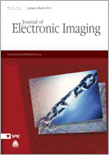
JOURNAL OF ELECTRONIC IMAGING
Pioneering Research in Imaging Science and Applications.JOURNAL OF ELECTRONIC IMAGING, published by SPIE - Society of Photo-Optical Instrumentation Engineers, stands at the intersection of cutting-edge research in various fields including Atomic and Molecular Physics, Optics, and Computer Science Applications. With an ISSN of 1017-9909 and an E-ISSN of 1560-229X, this esteemed journal has been a significant contributor to the scientific community since its inception in 1993, continuing its mission to provide a platform for innovative research through 2024. Operating from its headquarters in Bellingham, WA, United States, the journal is currently categorized in the third quartile for major domains such as Electrical and Electronic Engineering, indicating a robust engagement with contemporary topics and advancements. Although it is not an Open Access journal, it remains accessible to a wide audience of researchers, professionals, and students through institutional subscriptions. With its impactful contributions and a comprehensive view of electronic imaging, this journal not only serves as a vital resource but also drives discussions that shape the future of this rapidly evolving field.
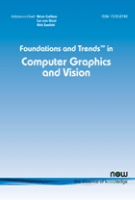
Foundations and Trends in Computer Graphics and Vision
Pioneering Insights in Computer Graphics and VisionFoundations and Trends in Computer Graphics and Vision, published by NOW PUBLISHERS INC, is a premier journal dedicated to advancing the fields of computer graphics and vision. With an impressive impact factor and ranked Q1 in the Computer Vision and Pattern Recognition category, this journal has established itself as a vital resource for cutting-edge research and trends. Spanning from 2005 to 2024, it covers a wide array of topics within its scope, featuring comprehensive reviews and insights that are essential for professionals, researchers, and students alike. The journal’s high Scopus rank, placing it in the top 4 of 106 in its discipline, underscores its relevance and authority in the field. While currently not offering open access, the importance of its curated content makes it a valuable addition to any academic library and a must-read for those looking to stay at the forefront of computer graphics and vision advancements.

MULTIMEDIA SYSTEMS
Pioneering Research in Multimedia SystemsMULTIMEDIA SYSTEMS, published by SPRINGER, is a premier academic journal dedicated to the dynamic field of multimedia technology and its applications across various domains. With the ISSN 0942-4962 and E-ISSN 1432-1882, this journal has established itself as an essential resource since its inception in 1993, providing researchers and professionals with rigorous peer-reviewed articles that explore innovative developments in Media Technology, Computer Networks, Hardware Architecture, Information Systems, and Software. As a testament to its academic impact, MULTIMEDIA SYSTEMS has attained a Q2 ranking in multiple key categories for 2023, alongside a notable Q1 ranking in Media Technology, highlighting its significance within the community. With a rich repository of knowledge and ongoing commitment to advancing multimedia research, this journal is an invaluable asset for those seeking to stay informed about cutting-edge technologies and methodologies. While the journal follows a traditional subscription model and is not presently open access, it ensures high-quality content that serves the scholarly needs of its audience, facilitated by its accessibility from Germany's respected academic infrastructures. For inquiries and submissions, the journal is based in New York, NY, further illustrating its global academic reach.